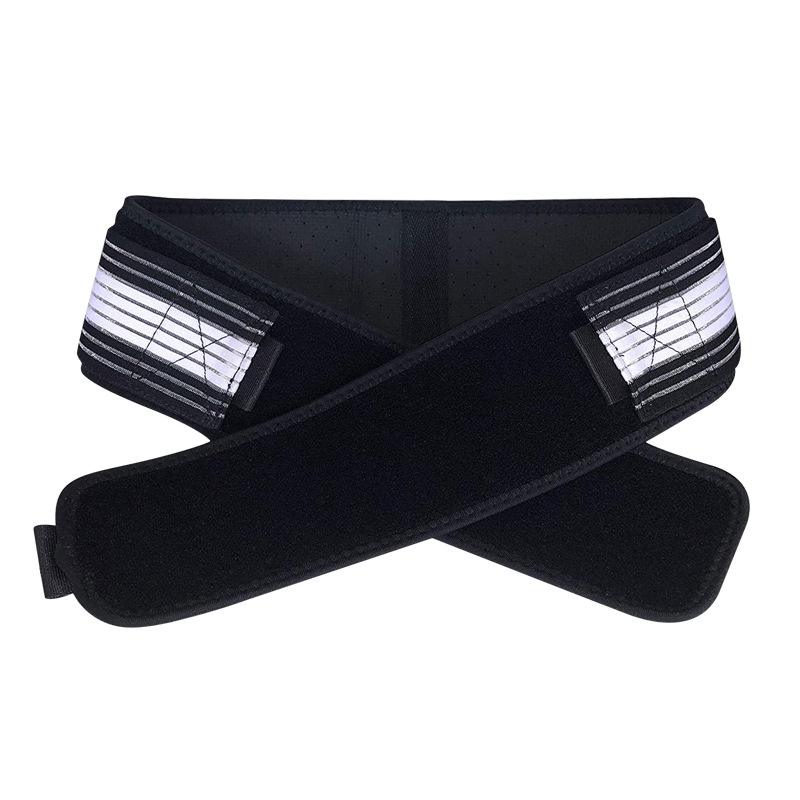Sacroiliac Belt: How To Wear

If you said “yes” to both of these queries, it is likely that you are open to exploring all treatment possibilities, one of which is donning a sacroiliac belt. Although there are a lot of versions on the market, can they actually assist good posture and alleviate pain? How to wear a sacroiliac belt?
A Sacroiliac Belt: What Is It?
An elastic support belt worn around the hips and pelvis is known as a sacroiliac belt.
The sacroiliac belt’s purpose is to:
- Lessen Pain
- Reduce sacroiliac joint inflammation
- Encourage a “natural” posture
- Boost individual and practical engagement.
When worn properly, the belt is intended to support the ligaments that have been weakened or injured while limiting joint motion.
The Sacroiliac belt’s additional support seeks to relieve pressure on the joint by improving pelvic alignment and aiding in the restoration of the joints’ normal ranges of motion.
Read about: Can You Wear Retainers After Wisdom Teeth Removal? Yes Or No – Health Wearables
Possible Benefits Of Wearing A Sacroliliac Belt
- Enhanced operational performance
- Diminished joint discomfort
- It is simple to put on and can be concealed behind clothing.
- It can help with sacroiliac joint inflammation decrease.
- better posture
You can likely discover a sacroiliac belt that fits your body shape or size because there are many different kinds and sizes of them on the market to pick from.
Materials Are Used to Make Sacroiliac Support Belt
The Serola Belt is made of two layers: the first is a non-elastic layer that resembles neoprene but is breathable and hypoallergenic. It is plush, cozy, and non-slip.
After the first layer is pulled snug, the second layer—an elastic one made up of elastic pull straps—is fastened. This layer adds additional compression and resilience, and it can be compressed to one’s comfort level.

What Is the Function of the Serola Sacroiliac Belt?
The sacroiliac joint is intended to be held together by the Serola Belt, which considerably reduces the possibility that it will open wider than usual in between treatments. With the right amount of tension applied during rehabilitation, the Serola Sacroiliac Belt secures the sacrum to the ilia, allowing the sacrum to move backward with the ilia as you perform exercises.
It is essential for good rehabilitation that the ligaments are not overworked and that the joint is unharmed. Muscular spasms and inhibition result from either too much or not enough stress.
How To Wear A Sacroiliac Belt?
There will be an adjustable fastener on the sacroiliac belt; but, if the belt is too loose, it will not stabilize the sacroiliac joint as intended.
Instead of the back, the belt should be worn around the hips and pelvis.
The way the belt is worn is crucial; if it is not worn properly, it will not function as it is intended to and the user won’t receive much benefit.
How Does This Sacroiliac Belt Work?
Since the Serola Sacroiliac Belt provides support for the base of the spine, strength is increased throughout the back, hips, and legs to significantly lower the risk of injury. Users of the Serola belt include:
- Maternity units
- Physiotherapy clinics
- Amateur and professional sports teams: Inter Milan, Wigan RFU and Harlequins Rugby
What Situations Are the Serola Belt Sufficient?
A variety of lower back conditions are treatable with the Serola Sacroiliac Belt. This includes:
- Disc herniation
- Facet syndrome
- Pubic symphysis dysfunction
- Sacroiliac joint dysfunction
- Sciatica
- Hip degeneration
- Lateral canal stenosis
Conclusion
Back pain can be extremely disruptive to day-to-day life. Worn around the lower back either under or on top of your clothes, the Serola Sacroiliac Belt for Back Pain can help to correct the biomechanics of your joints and is ideal for use in rehabilitation.